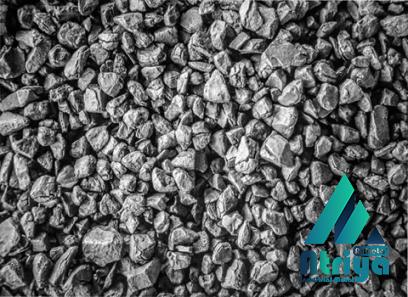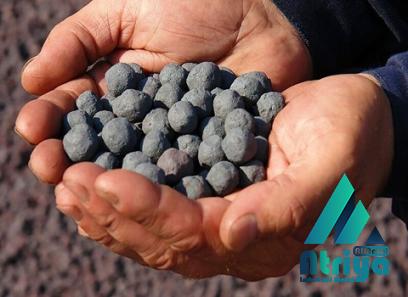A Game-Changer in the Steel Industry Sponge iron, also known as direct reduced iron (DRI), has revolutionized the steel industry with its numerous advantages and cost-effectiveness. Among the various types of DRI, CDRI sponge iron has emerged as one of the most popular and widely used forms, offering compelling benefits for steel manufacturers and end-users alike. CDRI sponge iron is produced through the direct reduction of iron ore, using a combination of coal and high-quality iron ore. This process eliminates the need for traditional blast furnaces and enables a simpler and more efficient method of iron production. Unlike traditional iron ore processing methods, CDRI sponge iron plants are smaller in size and have lower operating costs, making them economically viable for many steel manufacturers. The production process of CDRI sponge iron involves the use of rotary kilns, where iron ore pellets are fed into the kiln along with coal or coke. In the kiln, the iron ore is reduced to its metallic state through a series of chemical reactions, resulting in the formation of sponge iron. The sponge iron is then cooled and processed into various shapes and sizes, ready for use in steelmaking. One of the key advantages of CDRI sponge iron is its high purity and consistent quality.

.
 The direct reduction process removes impurities and contaminants present in traditional iron ore, resulting in a product that has higher iron content and is free from unwanted elements such as sulfur and phosphorus. This superior quality of CDRI sponge iron makes it an ideal raw material for steel production, as it ensures better steel quality and properties. Moreover, CDRI sponge iron offers environmental benefits by reducing carbon dioxide emissions. The direct reduction process emits significantly lower amounts of greenhouse gases compared to conventional blast furnace steelmaking. This makes CDRI sponge iron a preferred choice for steel manufacturers aiming to reduce their carbon footprint and comply with stringent environmental regulations. In addition to its environmental advantages, CDRI sponge iron also offers improved energy efficiency. The direct reduction process requires less energy compared to blast furnace steelmaking, resulting in reduced energy consumption and operating costs.
The direct reduction process removes impurities and contaminants present in traditional iron ore, resulting in a product that has higher iron content and is free from unwanted elements such as sulfur and phosphorus. This superior quality of CDRI sponge iron makes it an ideal raw material for steel production, as it ensures better steel quality and properties. Moreover, CDRI sponge iron offers environmental benefits by reducing carbon dioxide emissions. The direct reduction process emits significantly lower amounts of greenhouse gases compared to conventional blast furnace steelmaking. This makes CDRI sponge iron a preferred choice for steel manufacturers aiming to reduce their carbon footprint and comply with stringent environmental regulations. In addition to its environmental advantages, CDRI sponge iron also offers improved energy efficiency. The direct reduction process requires less energy compared to blast furnace steelmaking, resulting in reduced energy consumption and operating costs.
..
 This makes CDRI sponge iron an economically attractive option for steel manufacturers, especially in regions where energy costs are high. The versatility of CDRI sponge iron is another significant factor contributing to its widespread adoption in the steel industry. It can be used as a feedstock in electric arc furnaces (EAF) and induction furnaces, as well as a replacement for scrap steel. CDRI sponge iron can also be used in the production of various steel products, including billets, ingots, and rolled steel. Its adaptability and compatibility with existing steelmaking processes make CDRI sponge iron highly versatile for steel manufacturers. The growing demand for steel, driven by infrastructure development, construction, and manufacturing industries, has further fueled the demand for CDRI sponge iron.
This makes CDRI sponge iron an economically attractive option for steel manufacturers, especially in regions where energy costs are high. The versatility of CDRI sponge iron is another significant factor contributing to its widespread adoption in the steel industry. It can be used as a feedstock in electric arc furnaces (EAF) and induction furnaces, as well as a replacement for scrap steel. CDRI sponge iron can also be used in the production of various steel products, including billets, ingots, and rolled steel. Its adaptability and compatibility with existing steelmaking processes make CDRI sponge iron highly versatile for steel manufacturers. The growing demand for steel, driven by infrastructure development, construction, and manufacturing industries, has further fueled the demand for CDRI sponge iron.
…
 Its cost-effectiveness, environmental benefits, high quality, and versatility have positioned CDRI sponge iron as a game-changer in the steel industry. As steel manufacturers continue to seek more efficient and sustainable production methods, CDRI sponge iron is expected to witness sustained growth and play a significant role in shaping the future of steelmaking. In conclusion, CDRI sponge iron has emerged as a game-changer in the steel industry, offering numerous advantages over traditional iron ore processing methods. Its high purity, environmental benefits, improved energy efficiency, and versatility make it an attractive choice for steel manufacturers. With the growing demand for steel and the need for sustainable production methods, CDRI sponge iron is set to play a prominent role in the steel industry for years to come.
Its cost-effectiveness, environmental benefits, high quality, and versatility have positioned CDRI sponge iron as a game-changer in the steel industry. As steel manufacturers continue to seek more efficient and sustainable production methods, CDRI sponge iron is expected to witness sustained growth and play a significant role in shaping the future of steelmaking. In conclusion, CDRI sponge iron has emerged as a game-changer in the steel industry, offering numerous advantages over traditional iron ore processing methods. Its high purity, environmental benefits, improved energy efficiency, and versatility make it an attractive choice for steel manufacturers. With the growing demand for steel and the need for sustainable production methods, CDRI sponge iron is set to play a prominent role in the steel industry for years to come.











Your comment submitted.